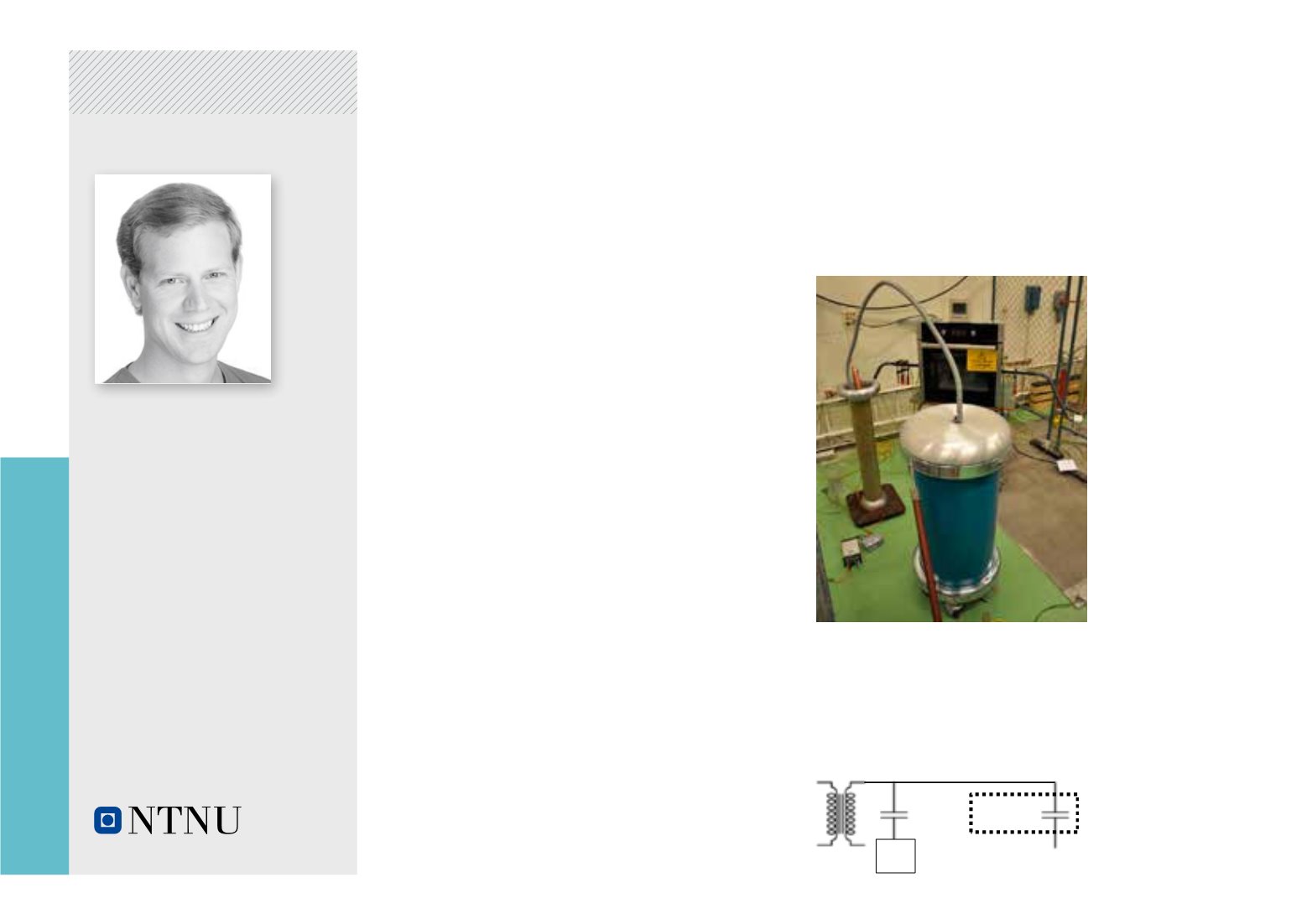

Laboratory test setup for partial discharge (PD) testing
at 50 Hz. Transformer in front, connected to a coupling
capacitor and the generator winding in back. An oven is
surrounding the winding and enables measurements at
different temperatures
PHD THESIS
Background
The majority of the Norwegian hydropower
generators was installed between 1960 and
1990, and many of these will soon reach the
expected lifetime and need refurbishment. One
main root cause for failure in hydro generators is
generally located to the groundwall insulation. It
is therefore important to have reliable diagnostic
methods to assess the groundwall insulation.
This reduces the risk of unexpected breakdown
and also too early winding replacement.
The objective of this PhD work is to correlate
insulation defects and non-destructive
measured quantities.
The method to be used is to first measure on
single generator windings with different history,
both spare windings and in-service aged windings
from both high and low voltage locations. This will
create a connection between the pristine system
and the aged system to quantify measurable
differences. Then, the faults will be localized by
acoustic or high frequency techniques before a
smaller area containing the fault, as well as a
non-fault area, will be measured again by the
same techniques. Next step is to reproduce the
faults artificially in a model system and prove that the
correlationsfoundintherealsystemisoriginatingfrom
theproposeddefects.
Relevant measurement techniques for condition
assessment are dielectric spectroscopy,
partial discharges, acoustic measurement and
dissection. These methods will characterize the
condition of the hydropower generator winding.
Department of electric
power engineering
2016-2019
Condition Assessment
of Generator Insulation
Supervisor:
Erling Ildstad
Co-supervisor:
Sverre Hvidsten,
Arne Nysveen
Torstein Grav Aakre
C
c
PD
Winding
Z
Oven
82
















